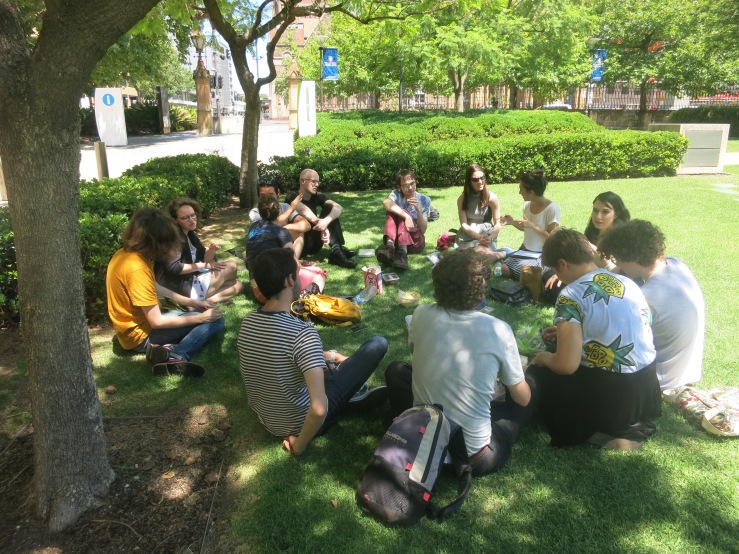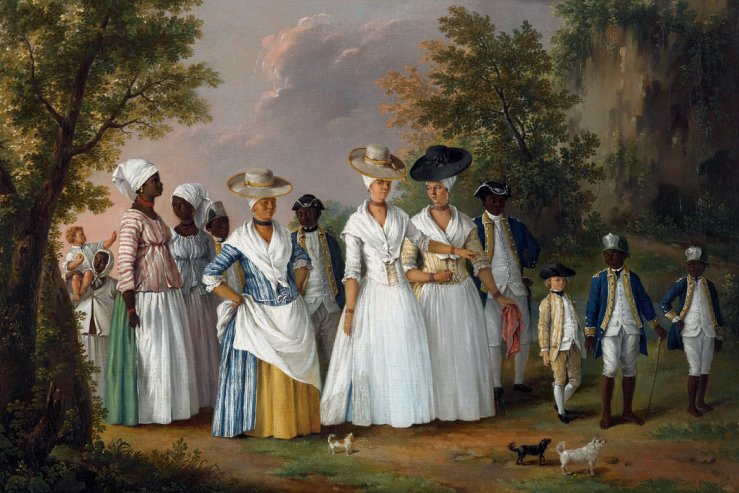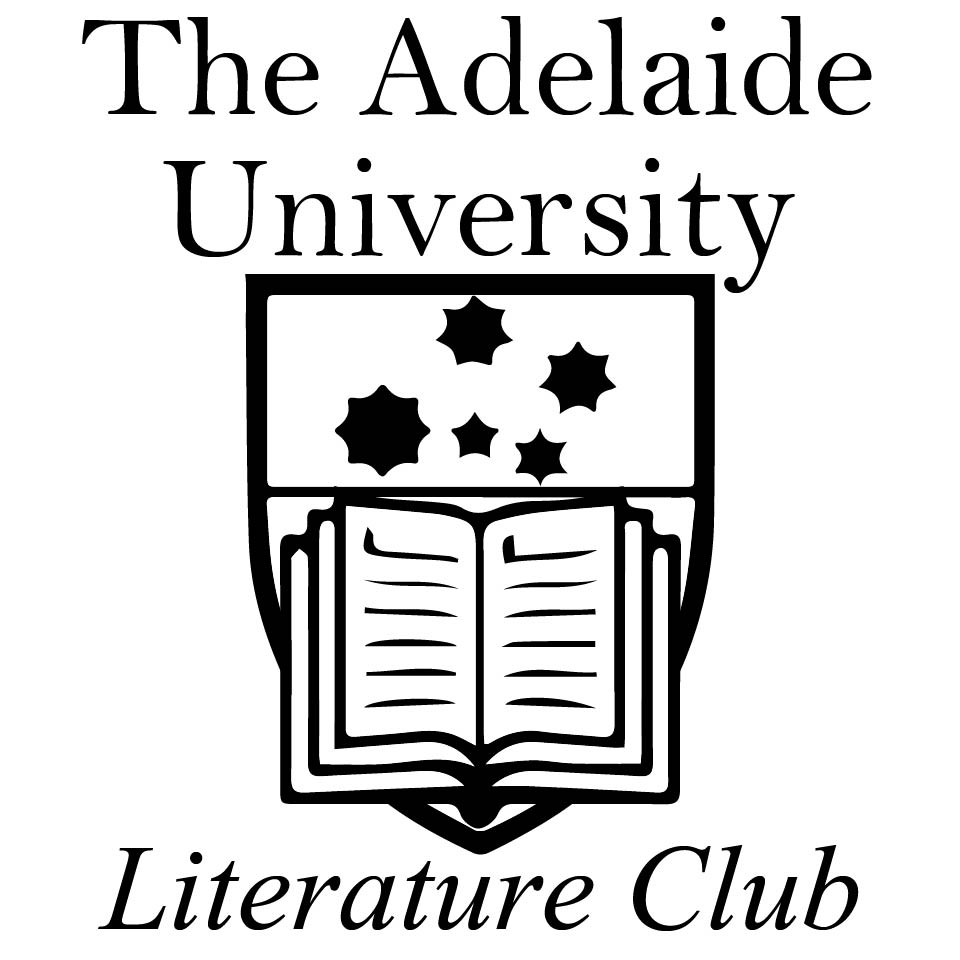Recorded here is the speech presented for The Adelaide University Literature Club at the ‘Gothic’ Social on January 29th 2017 [pictured], written and presented by Céline Zerna.

When Edgar Allen Poe imprints onto the page and into our minds the phrase “terror is not of Germany, but of the soul” (qtd in Shear 73) he draws our attention to one of the most simple, yet fundamental undercurrents of Gothic Literature: the notion that fear – that fruitful soil for the tenets of Gothic – is not found only in medieval Gothic manors or the psyches of Europeans, but is malleable and transmutable across time, space, and culture.
Although Gothic literature is often associated with the European world, medieval architecture and a fear of the implications of Enlightenment on the one hand, and of social and cultural regression on the other, this is not purely the case. Jennifer Lawn, for example, suggests a new approach to the Gothic which involves “treating gothic as a mode, not a genre: a way of doing and seeing adaptable across dislocations of culture, time, and space, rather than a substantive category” (qtd in Joseph-Vilain 61). The Gothic mode, infused with anxieties about space, time, and haunting, present writers with an apt literary space for dealing with similar anxieties in the colonial and postcolonial worlds.
The link to space, in particular, allows localised forms and tropes to be constructed and reconstructed to best suit the culturally and historically bound anxieties of a particular place and people (Joseph-Vilain 62). Approaches to the Gothic mode in the postcolonial world, thus, must negotiate a constellation of shared tropes and practices, as well as refined, re-shaped and culturally-patterned specificities (62). The duality of postcolonial Gothic – its conventional echoes and its refined specificities – is easily found across the Gothic modes’ travel away from Europe. “The literature of terror found a ready home amidst the subtext of European colonialism,” as Jack Shear suggests, and, by extension, the Gothic mode has been appropriated and made malleable by its various engagements with “the spectres that continue to haunt the postcolonial psyche” (74).[1]

A legacy of colonialism has created a space for repressed cultural fears of the “other” – those who do not fit into the privileged category of the white or European nationality[2] – to haunt the geographical and temporal landscapes from which they have been erased. The Gothic mode’s continual preoccupation with the “other” and “otherness” (Khair 4) and its ability to haunt the space from which it has been marginalised is fruitful ground for the postcolonial world and the discourses of racialised binaries which continue to haunt it.
René Descartes’s ‘I’ – that which enunciates the famous I think therefore I am – denotes an ‘individual’ who is able to master language and, while remaining external to it, use it for his own purposes. This is the ‘I’ that speaks, using language, to define ‘others’. This ‘I’, as Kaja Silverman observes:
assumes itself to be fully conscious (nothing could be more false, he tells us, than dreams), and hence fully self-knowable. It is not only autonomous but coherent[…] It offers us a narrator who imagines that he speaks without simultaneously being spoken, who believes himself to be outside of discourse. (128)
The Cartesian ‘I’ claims a kind of linguistic mastery: the capacity to mirror the extra-linguistic world using language as a transparent medium.[3]
But this ‘I’ is much less stable than we assume. As Patricia Waugh warns:
Whose is the voice “I” hear? Is it “me” or “mine”, something not me, but that I own? If I listen too hard and for too long, I risk losing ownership of, let alone identity with, my voices; I may feel more like a ventriloquist’s dummy than a self. Or I may retain ownership but lose agency, hearing “my” voice disconnected from me, expressing alien content that seems not my own. One’s sense of self is evidently at times a precarious achievement. (54)
The narrative ‘I’, it seems, is more complex than the taken-for-granted singularity with which it is often associated. Recognising that if the ‘mind’ or the ‘self’ is to speak – to articulate experience with, or through, language – it may not always speak from a single, unified location of subjectivity.
It is probably not surprising, then, that a genre which is constantly bound up with the social anxieties which plague the various cultural and historical contexts which suspend their authors and readers festers in times of social anxiety: anxieties about what it means to be ‘human’, what it means to be a ‘self’, what it means to be ‘I’.
In such times of social anxiety, how do we define the ‘I’? How precarious is the ledge – how steep is the angle of the punctual oblique – which separates each end of the symbolic and linguistic binaries we construct in order to grasp at straws of identification?

Take, for example, Edgar Allen Poe’s Berenice, in which the protagonist, who is also our first-person narrator – our ‘I’ – is obsessed with his cousin and her beautiful teeth, which he extracts from her dead body after a fatal seizure, hiding them in a small box. The teeth – the symbol of his obsession and guilt, the evidence of the grim side that, if uncovered, would destabilise his veneer of civility and innocence – are repressed, pushed away spatially (in the box) and temporally (in the past), cognitively (in the back of his memory), linguistically (not speaking of them).[4]
His deed is repressed by memory, but continues to haunt him in its obscurity and vagueness:
But of that dreary period which intervened I had no positive — at least no definite comprehension. Yet its memory was replete with horror — horror more horrible from being vague, and terror more terrible from ambiguity. It was a fearful page in the record my existence, written all over with dim, and hideous, and unintelligible recollections. (Poe n.p)[5]
The teeth are not the “other”, necessarily. His ‘I’ is not reinforced by their proximity, but by their distance from him, by his ability to hide them away.
Like the ‘other, the abject, too, is defined as something opposed to ‘I’, but unlike the concept of the ‘other’, whose differences are highlighted – reinforced – by its confrontation with the self, the abject is not an ‘object’ against which a subject can continually identify itself.[6] The subject must push it away; repress it in order to keep up a semblance of coherence and purity.
Repression runs so deeply that it manifests in a kind of amnesia: he cannot think why the box on his desk continues to draw his attention. He asks of the box: “why did I shudder in regarding it?” (Poe n.p.)
We may regard this box, then, as a perfect correlative for the discursive space of the abject. It is something which cannot be completely separated from the self; it cannot be completely pushed into the ‘other’ end of the binary. Rather, it cannot be separated: the horrific crime the protagonist commits cannot be separated from him, but in order to retain a semblance of civility and stability, he must continue to repress and contain it.
The ‘box’ in which he attempts to confine the abject is itself exceedingly fragile:
There came a light tap at the library door – and, pale as the tenant of a tomb, a menial entered upon tiptoe. … What said he? … He … whispered me of a violated grave …He pointed to my garments; they were muddy and clotted with gore. … [He] took me gently by the hand: it was indented with the impress of human nails. He directed my attention to some object against the wall. I looked at it for some minutes: it was a spade. With a shriek I bounded to the table, and grasped the box that lay upon it. But I could not force it open; and, in my tremor, it slipped from my hands, and fell heavily, and burst into pieces; and from it, with a rattling sound, there rolled out some instruments of dental surgery, intermingled with thirty-two small, white, and ivory-looking substances that were scattered to and fro about the floor.” (Poe n.p.)
Unable to make these little white substances part of a symbolic system in which they are subsumed as an ‘object’ of language, the narrator is confronted with the abject: the discursive and semiotic space which annihilates his previous sense of a stable ‘I’.
Two readings are possible:
- The narrator, the ‘I’, is confronted by the abject (the “thirty-two small, white, and ivory-looking substances”) which, because of their status as ‘abject’ are unable to be completely pushed into the ‘other’-end of the symbolic binary and thus are unable to be classified linguistically… They become literally: “a ‘something’ I do not recognise as a thing” (Kristeva 2).
- The narrator – the ‘I’ – is confronted by the abject (again, the teeth) which, pulled out of their site of repression – literally overflowing “burst[ing]” from their confinement – annihilate the self (the narrator) to the point that he no longer has linguistic mastery over the world: he can no longer order the world in language, can no longer construct a line between ‘self’ and ‘other’. Thus, they are no longer ‘teeth’ – no longer objects defined by their linguistic positioning as nouns: his linguistically masterful ‘I’ is annihilated.
If he were to recognise these substances for what they really were, the illusory stability with which he has attempted to safeguard his sense of self will be annihilated: to recognise them as teeth, as part of his crime, as part of himself, is an acknowledgement of a reality that shatters the oblique between human/monster: thus, he must push them away, out of the realm of language. Also keep in mind that this marks the end of his narration (the story ends after this point).[7] Either way, this becomes an obvious foregrounding of an anxiety over the loss of language itself:
- A feminist reading? The bursting forth of the recognition of the corporeality of a woman’s form (even just her teeth) which is unable to be reduced back into the male narrator’s linguistic mastery: he is unable to subsume, reduce her back to language. She, despite his best efforts, is able to signify in such a way that annihilates his previous ability to repress through language.
- Embedded in syntax? As he speaks of the bursting of the box (“But I could not force it open…” (Poe n.p)), the words he uses are not confined between small sentences suspended between a capital letter and a period: they become excessive, overflowing on the page with only semi-colons and commas to separate words and clauses. Language is literally no longer able to be contained.[8]
These social anxieties around control and power are, in this particular case, fundamentally a crisis of language and the ability to reduce and master the world through language.
Taking the seeping, festering obsession that leaks from the tiny box as it continues to haunt its verbal master as a model for other social anxieties: how might we approach other texts?
The return of the repressed ‘other’ is a theme which dominates much of the Gothic canon: something which is repressed, hidden away in space, time, memory… in order to allow the semblance of a ‘stable’ self to define its borders. How, then, do we handle something that is not necessarily external to us? Something that we continue to push away in order to live, but that continues to haunt us from that space, pulling us closer to the point where meaning is not reinforced, but collapses? How does this apply to the social anxieties of postcolonial worlds and the classification of bodies in colonial discourse? To what extent are Gothic texts festering with anxieties about the loss of the power of language, alongside the already apparent social, material and supernatural anxieties?

Although I am aware that I have not included some juicy examples (my apologies, I have been ill) from Australian writers, I would like to rely on all of you – since I understand many of us are avid readers and writers – to relay these ideas to texts you have come across. Ask yourself: what is really haunting Gothic literature?
Words by Céline Zerna.
Published by Dylan Rowen.
Works Cited:
Jones, Ann Rosalind. “Writing the body: toward an understanding of l’ecriture feminine”. Feminist Studies 7.2 (1981): 247-263. JSTOR. Web. 26 July 2016.
Joseph-Vilain, Melanie. “‘Something hungry and wild is still calling’: post-Apartheid Gothic”. Commonweath Essays and Studies 34.2 (2012): 61—70. Informit. Web. 20 June 2017.
Khair, Tabish. “The Gothic, postcolonialism and Otherness”. The Gothic, Postcolonialism and Otherness: Ghosts from Elsewhere. Hampshire: Palgrave Macmillan, 2009. 3—20. Print.
Kristeva, Julia. “Approaching abjection”. Powers of Horror: An Essay on Abjection. Trans. Louis S Roudiez. New York: Columbia University Press, 1982. 1—31. Print.
Poe, Edgar Allen. Berenice. Adelaide: eBooks@Adelaide. Web. Accessed 22 January 2017.
Shear, Jack. “Haunted house, haunted nation: Triomf and the South African postcolonial Gothic”. Journal of Literary Studies 22 (2006): 70—95. Print.
Silverman, Kaja. “The subject”. The Subject of Semiotics. New York: Oxford University Press, 1983. 126-193. Print.
Waugh, Patricia. “The novelist as voice hearer”. The Lancet 386.10010 (2015): e54-e55. The Lancet. Web. 10 November 2016.
Further Reading:
Botting, Fred. Gothic. London: Routledge, 1996. Print.
Meaney, Gerardine. “The abject and the absence of the ideal”. (Un)Like Subjects: Women, Theory, Fiction. London: Routledge, 1993. 191-215. Print.
Miles, Robert. “Abjection, nationalism, and the Gothic.” The Gothic. Ed. Fred Botting. Cambridge: DS Brewer, 2001. 47-70. Print.
Oliver, Kelly. Reading Kristeva: Unraveling the Double-bind. Indiana: Indiana University Press, 1993. Print.
Van Niekerk, Marlene. Triomf. Trans. Leon de Kock. Johannesburg: Jonathan Ball, 1999. Print.
Footnotes:
[1] He says this of South African literature, but it’s pretty clear that this particular quote could be applied elsewhere (Australia, for example).
[2] We could definitely, depending on our focus, add male, heterosexual, ruling/middle class etcetera to our list of privileged categories.
[3] The link between language and patriarchy was a major concern for many post-structuralist feminists writing around the 1970s (Julia Kristeva is included in this). Ann Rosalind Jones outlines this in her article “Writing the body: toward an understanding of l’ecriture feminine” when she outlines:
Their [Kristeva’, Cixous’s, Irigaray’s, and Wittig’s] common ground is an analysis of Western culture as fundamentally oppressive, as phallogocentric. “I am the unified, self-controlled centre of the universe,” man (white, European, and ruling class) has claimed. “The rest of the world, which I define as the Other, has meaning only in relation to me”… To speak and especially to write from such a position is to appropriate the world, to dominate it through verbal mastery. Symbolic discourse (language, in various contexts) is another means through which man objectifies the world, reduces it to his terms, speaks in place of everything and everyone else – including women. (248, my emphasis)
[4] The relationship between desire and abjection comes to light here. He desires the teeth within Berenice’s mouth when she is alive: at this point they are objects. However, after they have crossed over into the realm of the corpse, and his act of exhumation and extraction is the only way of attaining them, they cross over into a more ambiguous space. No longer objects, they signify death, crime, even madness. Thus, in order to prevent a confrontation with the abject, he must repress them. Similarly, Kristeva outlines: “there are lives not sustained by desire, as desire is always for objects. Such lives are based on exclusion” (6, emphasis in original).
[5] “The ‘unconscious’ contents remain here excluded but in a strange fashion: not radically enough to allow for a secure differentiation between subject and object, and yet clearly enough for a defensive position to be established—one that implies a refusal but also a sublimating elaboration” (Kristeva 7, emphasis in original).
[6] “What is abject is not my correlative, which, providing me with someone or something else as support, would allow me to be more or less detached and autonomous… If the object, however through its opposition, settles me within the fragile texture of a desire for meaning… what is abject, on the contrary, the jettisoned object, is radically excluded and draws me toward the place where meaning collapses.” (Kristeva 1-2, emphasis in original)
[7] “A massive and sudden emergence of uncanniness, which, familiar as it might have been in an opaque and forgotten life, now harries me as radically separate, loathsome. Not me. Not that. But not nothing, either. A “something” that I do not recognise as a thing. A weight of meaninglessness, about which there is nothing insignificant, and which crushes me. On the edge of non-existence and hallucination, of a reality that, if I acknowledge it, annihilates me.” (Kristeva 2, my emphasis)
[8] Especially if language, particularly symbolic language, is to be thought of as a system or a set of rules, this is even more salient. Order and control are undermined by the abject which occupies a liminal and ambiguous space: it is “not lack of cleanliness or health that causes abjection but what disturbs identity, system, order. What does not respect borders, positions, rules. The in-between, the ambiguous, the composite” (Kristeva 4, my emphasis).

